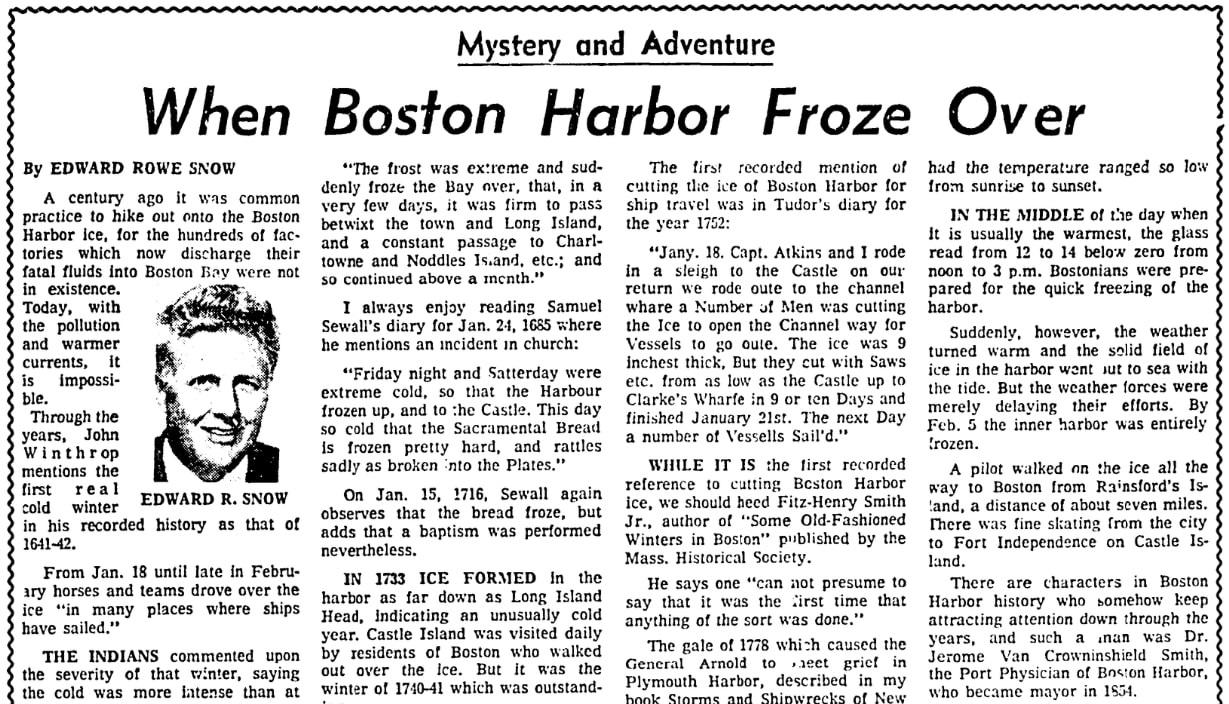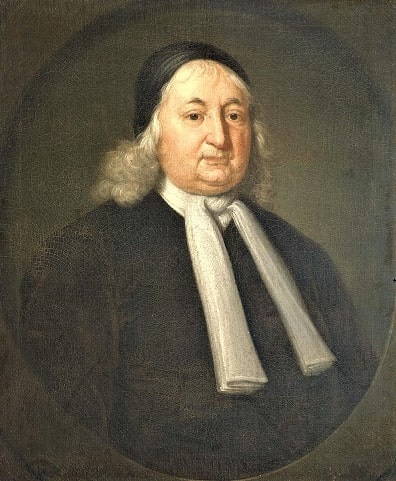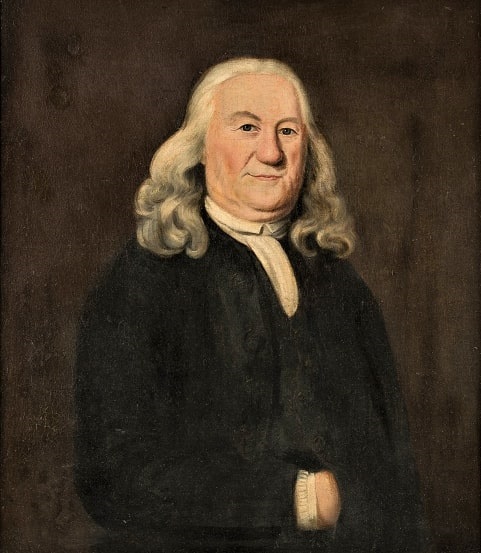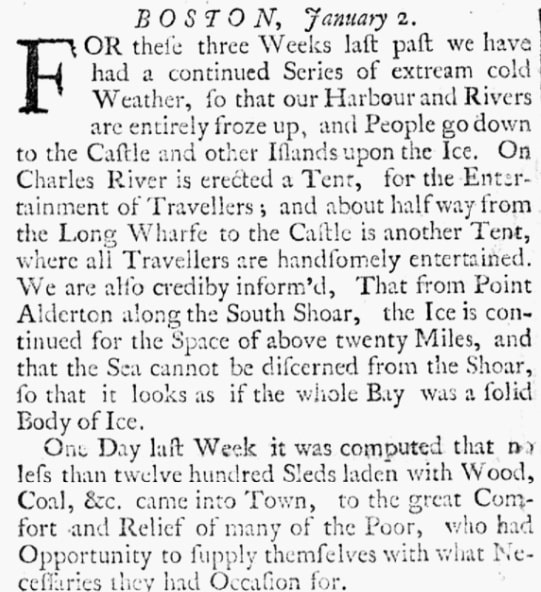Introduction: In this article, Melissa Davenport Berry features diary entries that describe the extremely cold weather that froze Boston Harbor in early Massachusetts Bay Colony history. Melissa is a genealogist who has a blog, AnceStory Archives, and a Facebook group, New England Family Genealogy and History.
As I discussed in the first part of this series (see: Genealogy Tip: Diaries), try a search looking into published diary or journal records – they will help you understand the life and times of your family.
Even if you had no idea your ancestor kept a diary or journal, there’s a chance portions of it were published – or, perhaps, snippets from the diary or journal of someone going through similar experiences in the same place at the same time as your ancestor. Newspapers sometimes printed these snippets, and an online collection of newspapers, such as GenealogyBank’s Historical Newspaper Archives, is a good place to look for them.
Today I look at the diarists who penned the prickly cold climate which froze Boston Harbor in early Massachusetts Bay Colony history, as covered by historian, writer, and infamous “flying Santa,” Edward Rowe Snow, who wrote a long-time feature spot in the newspapers. I added more lines from other diarists as well.

Snow published snippets from his book The Romance of Boston Bay in the Boston Herald. Much of his sourcing came from diaries, which include a passage from his own ancestor John Rowe, an 18th century Boston merchant best noted for his famous cargo that played a role in the Boston Tea Party. He was the developer of Rowe’s Wharf in Boston.
Rowe’s diaries are filled with colorful anecdotes and many historic events. His papers are housed at the Massachusetts Historical Society and have been transcribed and digitized.
According to Rowe, Christmas morning of 1778: “The coldest morning as by the thermometer for forty years; a thin congregation,” but this reference was just the tip of the iceberg. Nine days later Rowe wrote that: “men and beasts were frozen to death,” along the harbor neck. He also complained in 1776 it was so cold that “ink is freezing while I write.” One Sunday in 1765 “twas so very cold that Mr. Walter did not preach in the forenoon.”
Here are some other diary records Snow featured:
John Winthrop noted that from January 18 until late in February “the winter cold was unprecedented in the Indians’ experience,” and he emphasized that Massachusetts Bay was frozen out “to sea so far as one could well discern” and the ice was so thick that “horses and carts went over in many places where ships have sailed.”
On 17 February 1642, Captain Edward Gibbons, a romantic figure in the early Puritanical picture of Boston Bay, gained everlasting fame by riding in his sleigh from his house situated near the end of Winthrop Street across the harbor ice to Boston itself. This is the first recorded instance of this kind.
The winter of 1654 was quite blustery, as recorded by Boston’s first mint master John Hull. He wrote on December 16: “The frost was extreme and suddenly froze the Bay over, that in a very few days it was firm to pass betwixt the town and Long Island, and a constant passage to Charlestowne and Noodles Island and this continued for about a month.”

Merchant, legislator, and colonial magistrate Samuel Sewall’s diary has many references to excessive cold.
On 24 January 1685 he wrote: “Friday night and Saturday were extreme cold so that the Harbour froze up to the Castle [Island]. This day so cold that the Sacramental Bread is frozen pretty hard, and rattles sadly as broken into the plates.”
On 15 January 1716 Sewall again observed that the bread froze, but added that a baptism was preformed nevertheless.

The winter of 1740/41 proved to be like an artic zone as a solid mass of ice completely stopped all shipping in and out of the Harbor, and Deacon John Tudor wrote in his diary:
“This Winter was the Coldest the Old People ever remembered. Boston Harbour was Froes up twice. In Febuy was the depest Snow we have had for 25 Years, There was a Tent kept on ye Ice between Boston & the Castle for entertainement. Horses Cros’d Charlston & Winesimit Ferrey Daily. Sledes Loded with Wood came from Charleston to Bartons point.”

Boston’s severe cold in the winter of 1740/41 was so newsworthy that the Pennsylvania Gazette, out of Philadelphia, carried a report from Boston that noted: “For these three weeks last past we have had a continuous series of extreme cold weather, so that our harbour and rivers are entirely froze up.”
Stay tuned for Part 4.
Note on the header image: A portrait of John Rowe (1715-1787). Massachusetts General Court, House of Representatives, Committee on History of the Emblem of the Codfish: “A History of the Emblem of the Codfish in the Hall of the House of Representatives,” Volume 2, page 14. Credit: Wikimedia Commons.
Related Articles:
